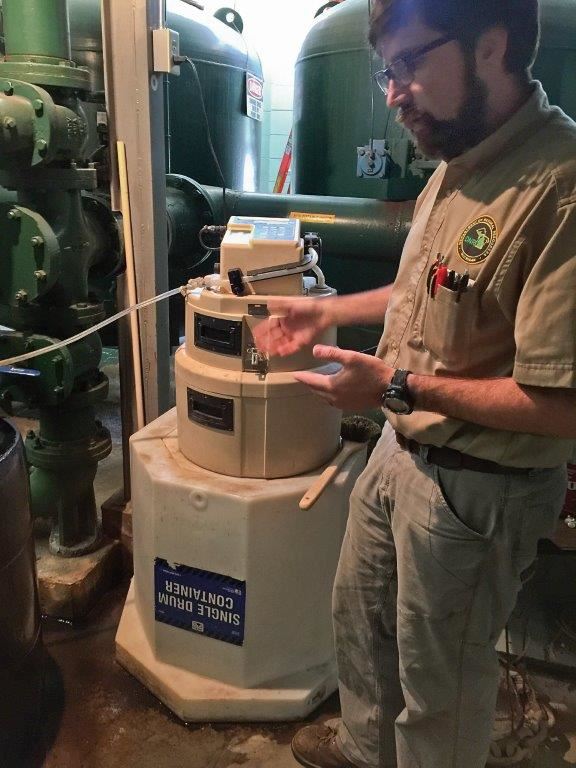THE HATCHERY MONITORING PROCESS
The Hatchery has nearly real-time information on the system’s performance, and can take corrective action before troublesome trends become real trouble. With its sophisticated processes; the Hatchery is essentially a fish production facility with an attached water treatment plant. During some times of the year the water discharged from the hatchery has less phosphorus in it than the water coming in! |
Samples are collected at six different points in the Hatchery process: The two water intakes are Brundage Spring (1) and Brundage Creek (2). At these input points the water is sampled using an automated water sampler every 30 minutes. Hatchery Discharge (3), samples are collected at three points in the water treatment process. The clarifier and the ponds are used to allow suspended phosphorus to settle out of the solution to the bottom for later removal. Additional sampling points are After Filter before Pond (4), After Clarifier before Pond (5) and the Backwash (6) where the sand filters are backwashed to clear out any accumulated sediment. Many factors influence the total phosphorus output from the hatchery, including input water, number of fish in production, amount and type of feed used, temperature and precipitation. With samples being collected twice a week and analyzed in the lab immediately at the hatchery, results are usually available in 36-48 hours. This is considerably faster than when samples were sent to an outside lab for analysis. For an example of how this process enabled the our partners at the Hatchery to deal with a problem in 2017, click here. * The Platte River State Fish Hatchery produces about 2.1 million salmon (Atlantic, Coho and Chinook) and 4 million Walleye hatchlings every year. |
Paul Stowe is busy collecting and testing samples! |


